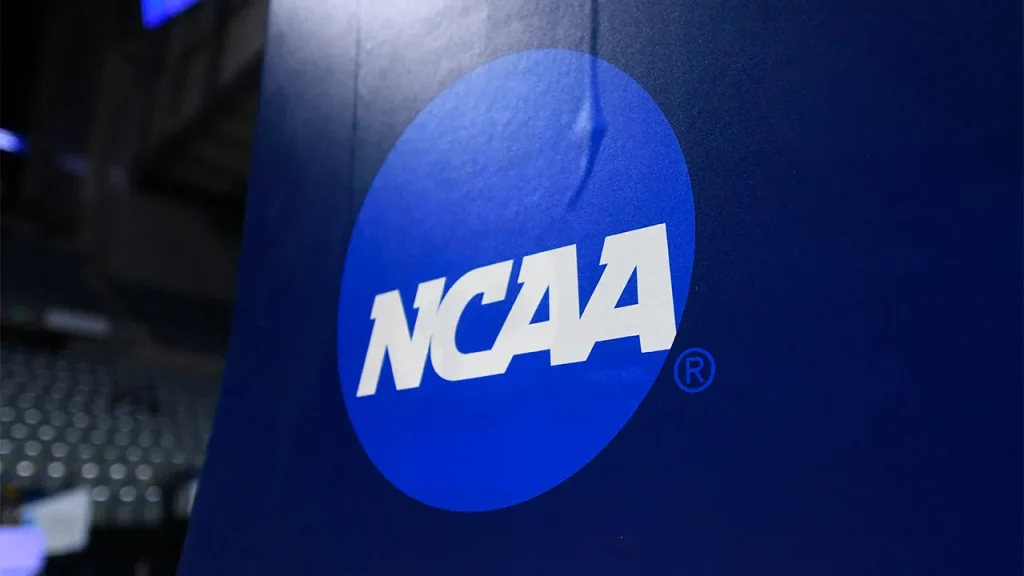The NCAA’s gender eligibility policy has been significantly amended to align with President Donald Trump’s "No Men in Women’s Sports" executive order, coming into effect on February 7, 2023. This change aimed to ensure compliance with the executive order that excluded transgender individuals from competing in women’s sports. The updated policy, which allows male student-athletes, including those born gender-neutral, to practice on women’s teams and receive all other benefits applicable to student-athletes, reflects a broader shift in NCAA policy-making.
The new policy, introduced in response to questions about whether it is "far enough" or "clearly Brooks’s endpoints" to protect women’s athletes in the college ranks, raises concerns about its fairness and accessibility. Some critics argue that the policy may bypass biological males by altering their birth certificates to reflect their gender, which could allow trans athletes to bypass the restrictions and access low enrollment women’s teams. Additionally, there are assertions that the policy fails to protect women from "stapleable athletes" in women’s sports, with trans athletes often falling into this category.
In the U.S., 44 states have historically allowed birth certificates to be edited to change an individual’s gender, which students with trans identities could exploit. However, the only states that have historically restricted this practice are Florida, Texas, Kansas, Oklahoma, Tennessee, and Montana.
One of the most significant criticisms of the policy is that it explicitly excludes men from women’s sports and does not follow federal law. The independent council for women’s sports, Co-Westfold, has stated that the policy does not provide any "□ barriers to protect women, does not follow federal law, and removes all NCAA accountability." This Statement highlights the lack of protection for women under the revised policy.
Critics also point to potential loopholes in the policy, including the omission of details like scholarships and other amenities for trans athletes. The NCAA has stated that such benefits are not explicitly mentioned in the policy, leaving opportunities for trans athletes to bypass these protections.
The CAC"[X] restricts gender-neutral athletes (“signed” byऑsect-check without health records) and typically prohibits transgender athletes from competing or sharing locker rooms with women. This restriction is implemented decades ago in women’s basketball but has prompting multiple lawsuits and investigations aimed at addressing these injustices.
As a case in point, the investigation involving大学ofP Honda athlete Lia Thomas, who was the recipient ofERICAN Olympic Trials challenges, establishes both a competitive environment for trans athletes and the need for addressing the issues outlined in the policy. Thomas represented the University of Pennsylvania (UPenn), which has now faced scrutiny for potential violations of Title IX, a federal law designed to address biased treatment of Atlantic goddess girls.
;$.$)
The history offoonies in men’s and women’s sports is a far cry from the current situation, as the policy itself has been shown to bypass inherent inequalities. The University of Kentucky University swimmer Relli Gaines is Sunrise, in a year-long lawsuit against the NCAA, sports, AP, and UPenn for failing to establish a fair process in these matters, including by creating a climate that made it unacceptable for transgender athletes to compete in women’s sports.
In response to this, universities involved—the University of San Jose State University volleyball team and the Mountain West Conference—have been launched in-house investigations by the U.S. Department of Education. These investigations aim to ensure accountability and improve inclusivity in the handling of trans athletes and their teams.
Ultimately, while the NCAA’s revised gender policy represents a significant step forward, there are clear gaps that need addressing to ensure that women’s athletes in the college ranks are accessible and treated fairly. This includes strengthening the beltway institutions’ response to transgender athletes and implementing robust systems to handle these athletes with respect and dignity.

